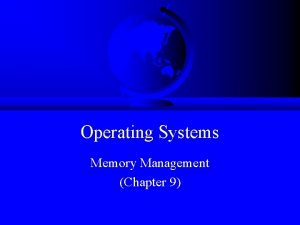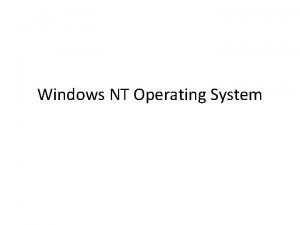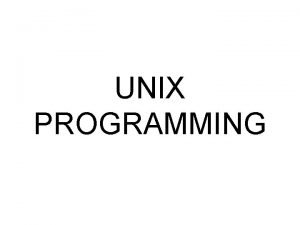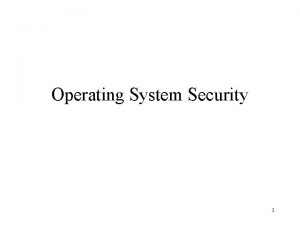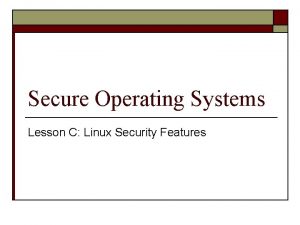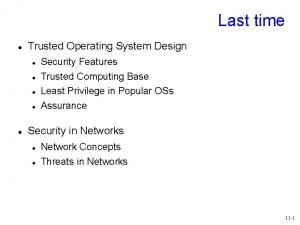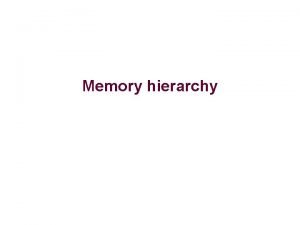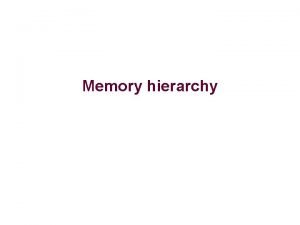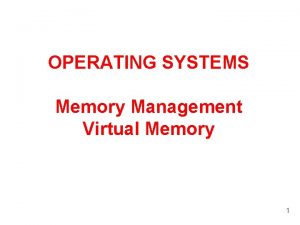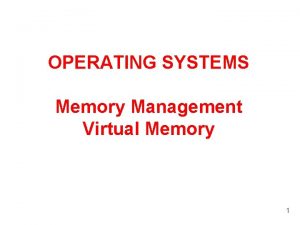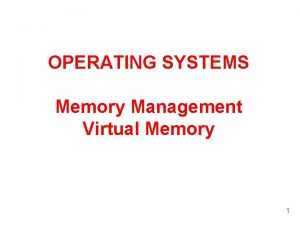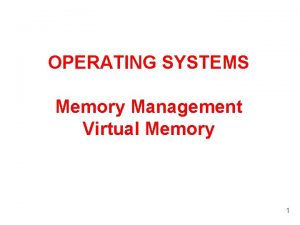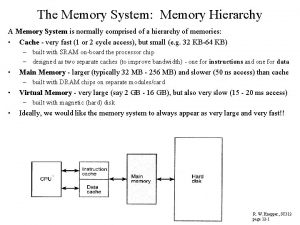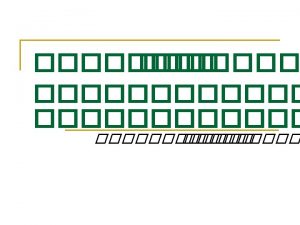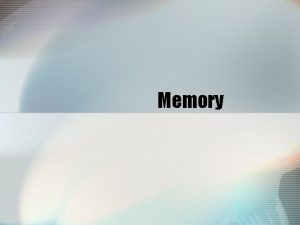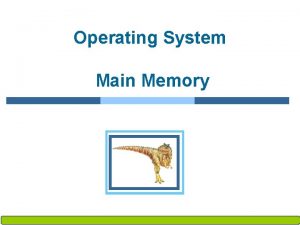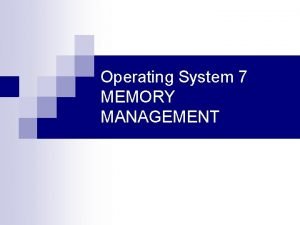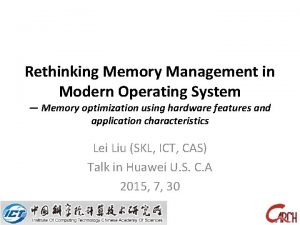Operating System Features 1 Operating System Features Memory


















- Slides: 18

Operating System Features 1

Operating System Features • • • Memory protection Temporary file issues Dead space issues Sandboxing Object Request Brokers 2

Separation • Physical – processes use different physical objects • Temporal – processes use same objects at different times • Logical – processes use objects in constrained space • Cryptographic – processes use only intelligible objects 3

Levels of Protection • • • None Isolation Share all/Share none Share via access limitation Share by capabilities Limited use 4

Granularity • • Volume (physical storage structure) Data collection (file, database, memory) Data element (entry, memory structure) Field (value within data element) Word (addressable memory unit) Byte (character) Bit (1/0) Detail vs. Efficiency 5

Mechanisms • • Fence Register Relocation Base/Bounds Register Tagged Architecture Segmentation Paging Paged Segmentation Capability 6

Fence Register • Address bounding protected and open memory – Protected, typically operating system – Open, typically user 0 Operating System 8192 • No protection within Max bounds User Fence 8193 Program Space 7

Relocation • Need to shift programs in 0 memory • Programs written using 8192 memory 0 and above • Operating system 16384 translates to actual location 24576 • Retranslate to shift program in memory Operating System Program A (old) Program A (new) 8

Base/Bounds Register • Starting address for 0 program – base 8192 register • Max allocated address 16384 – bounds register • Changed at context 24576 switch Operating System Base 16384 Program A Program B Bound 20480 9

Tagged Architecture • Each word of memory has identified access rights • Rights tested on each access • Typically few distinctions – Data – Pointer – Control D 0001 D 0002 D 0003 P 8192 C Load A C Add B C Store C P 16384 D 0005 D 0006 P 10572 10

Segmentation A Table Operating Data rw Inst. x Con. r System Program B Data Program Instructions B Table Data rw Inst. wx Con. r Program A Data Program Constants • Program pieces – Instructions – Data – Constants • Access <seg, offset> • Store separately – Base – bound • Protect differently • Allow sharing • External fragmentation 11

Paging a • Equal-size blocks • Access <pg, offset> • Offset > size goes to next page • Difficult to protect • Less fragmentation • Difficult to share b Page table c 0 1 2 3 d e f g h i j f b j e j+53 <2, 53> 12

Paged Segmentation • Segment references translate to page references – <seg, offset> – <<page of seg>, <page offset>> • Segmentation for sharing/protection • Paging for ease of handling 13

Capabilities • Unforgeable token – Identity of object requested – Rights to object – Signature of broker • Control of rights transfer • Control of rights propagation • Done at structure level 14

Temporary File Issues • Temporary file – duration for life of process only • Intended private and non-invasive • Threats – Disclosure – Modification – Misdirection • Protection via atomic transactions 15

Dead Space Issues • What are default values? – Random – Zero – Whatever was there before • What are cleared values? – Random – Zero – Pattern – No clearing 16

Sandboxing • Restricted environment for untrusted code – Web code – Email code – Issues of completeness, operations available • Alternative: trust vendor signature(Active. X) • Alternative: carry proof (lab systems) • Alternative: cryptography (Microsoft) 17

Object Request Brokers • Object – code and data bundle, limited access methods • Broker – mediate communication between objects • CORBA – industry standard • Still a lot of discussion about protection 18
 Virtual memory
Virtual memory Memory management in os
Memory management in os Memory management operating system
Memory management operating system Episodic memory vs semantic memory
Episodic memory vs semantic memory Implicit explicit memory
Implicit explicit memory Long term memory vs short term memory
Long term memory vs short term memory Internal memory and external memory
Internal memory and external memory Primary memory and secondary memory
Primary memory and secondary memory Physical address vs logical address
Physical address vs logical address Which memory is the actual working memory?
Which memory is the actual working memory? Virtual memory
Virtual memory Virtual memory in memory hierarchy consists of
Virtual memory in memory hierarchy consists of Eidetic memory vs iconic memory
Eidetic memory vs iconic memory Symmetric shared memory architecture
Symmetric shared memory architecture Nt operating systems
Nt operating systems History of unix
History of unix Features of unix operating system
Features of unix operating system Linux operating system security features
Linux operating system security features Operating system security features
Operating system security features


